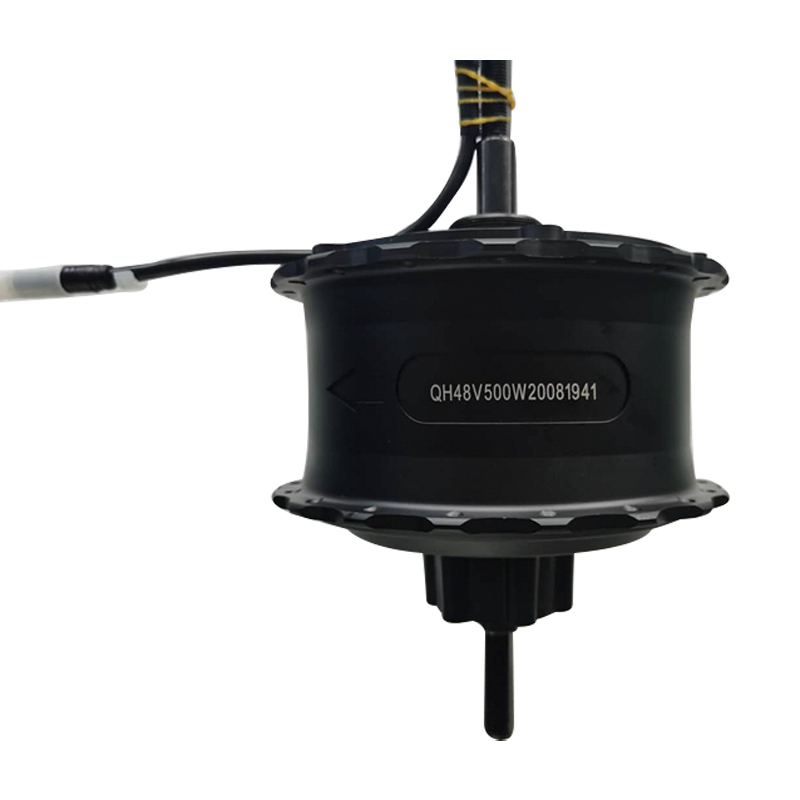

1. Check the motor housing and connecting wires regularly
Motor housing inspection
The E-bike Motors housing is an important protective layer to protect the internal motor coils and gears. If the housing is cracked or damaged, dust, moisture and other foreign matter may enter the motor, causing the coil to short-circuit, the gears to rust or even the motor to fail. Therefore, it is recommended to check the housing condition at least once a month. When encountering damage, the motor housing should be repaired or replaced in time to avoid further damage.
Connection wire inspection
The motor transmits power to the controller and battery through cables. If the connecting wire is worn, broken or the interface is loose, it will cause the motor to lose power, short-circuit or work unstably. When checking, pay special attention to whether the cable surface is cracked or worn, whether the interface is clean and rust-free, and whether the plug is firm. The cable position should avoid being pressed by the tire or bent excessively, and fix it with a cable tie if necessary.

2. Keep the motor clean
Clean up mud and water stains
During riding, especially in rainy days or muddy roads, the surface of the motor is easily stained with mud and water stains. If these impurities are attached for a long time, they will block the heat dissipation holes, resulting in poor heat dissipation of the motor and overheating. It is recommended to wipe the motor with a clean soft cloth after riding to ensure that the surface is clean and dry.
High-pressure water gun flushing is prohibited
The water flow sprayed by the high-pressure water gun has high pressure and can easily rush into the motor, damaging the internal electronic components and bearings of the motor, causing short circuits or rust. When cleaning the motor, it is best to wipe it gently with a damp cloth, or rinse other parts of the vehicle body with low-pressure water flow to avoid directly spraying the motor.
3. Use the motor reasonably to avoid overload
Avoid long-term full load
The motor working at full load for a long time (such as continuous climbing, overload) will cause the motor to overheat, reduce motor efficiency, and even burn the coil. When riding, you should try to avoid continuous long-term full load operation, take a proper rest, and give the motor a chance to dissipate heat.
Smooth acceleration
Sudden and strong acceleration will instantly increase the motor load, resulting in a sharp increase in current, which is easy to cause motor overload. Smooth starting and acceleration not only protect the motor, but also improve endurance and riding comfort.
4. Check and replace lubricants in time (for motors with gears)
The importance of gear lubrication
Some mid-mounted motors have mechanical gear transmission inside, and friction between gears will cause wear. Adding lubricant at the right time can reduce friction, reduce noise, and extend the life of gears. Generally, check the lubrication status every six months, or adjust it appropriately according to the frequency of use.
Use the right lubricant
Be sure to use the special lubricant recommended by the manufacturer and avoid using inferior oil. The wrong lubricant may cause corrosion or accumulation of dust and sand on the gears, which will accelerate wear.
5. Monitor motor temperature and abnormal sounds
Motor temperature monitoring
During normal operation, the motor will heat up slightly, but if it is obviously overheated (such as hot to the touch, smoke coming out of the heat dissipation holes, etc.), it is necessary to stop and check immediately. Overheating may be caused by a short circuit, gear jamming, or excessive load.
Abnormal sound identification
If the motor makes a "buzzing", "clicking" or metal friction sound, it may be due to internal bearing wear, gear misalignment, looseness, or foreign matter entering. If you hear abnormal sounds, you should send it for repair as soon as possible to avoid more serious damage.
6. Regular professional inspection and maintenance
Professional disassembly and inspection
It is difficult for ordinary riders to disassemble the motor for detailed inspection. It is recommended to send the motor to a professional repair station every six months or about 3,000 kilometers to disassemble the motor and check whether the motor coil is burnt, whether the bearing is well lubricated, and the wear of internal parts.
The maintenance cycle is adjusted according to the use environment
If you often ride in harsh environments (such as rainy and muddy, mountain climbing), it is recommended to shorten the maintenance cycle; conversely, it can be appropriately extended when the environment is better.